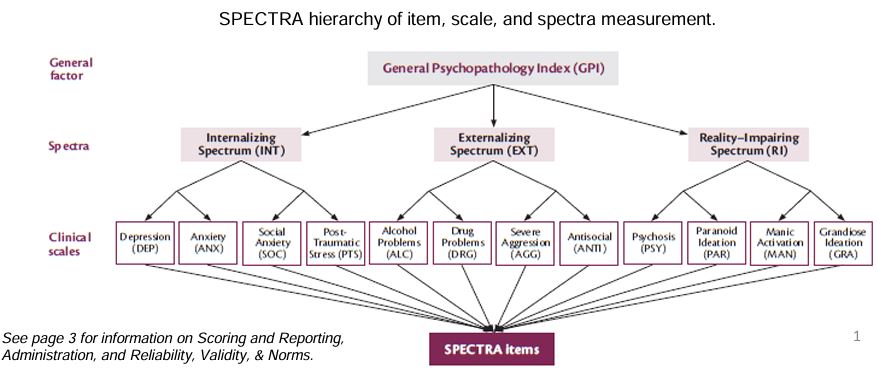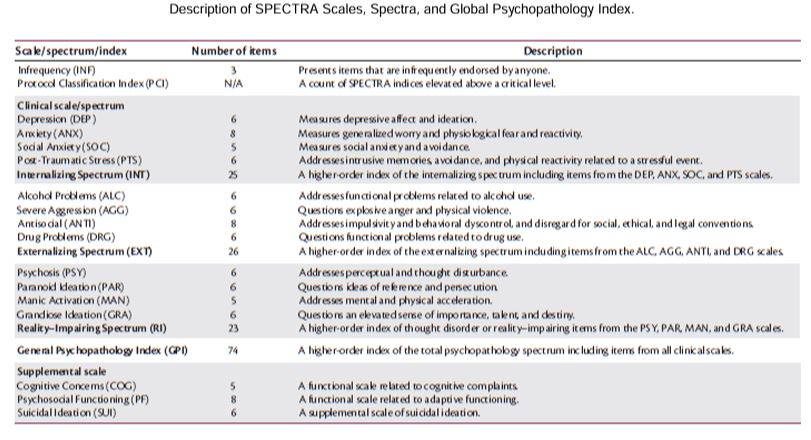Register now and start:
- Accessing PAR Training
- Shopping PAR products & tools
- Using online assessments with PARiConnect
The SPECTRA provides a quick hierarchical assessment of adult psychopathology. It can be used to evaluate individuals in a variety of clinical settings, such as inpatient and outpatient clinics, hospitals, schools, and forensic settings. Provides information relevant for intake, clinical diagnosis, treatment planning, and monitoring.
Features 96 self-report items that can be completed and scored via carbonless form, plus three supplemental scales, one validity scale, and one response style indicator.
Whether measured as discrete disorders or continuous dimensions, psychopathology demonstrates substantial covariation and comorbidity. Multivariate research has shown that comorbidity reflects the presence of higher-order spectra that organize a wide range of psychiatric conditions into three broad dimensions: Internalizing, Externalizing, and Reality-Impairing. Discovery of these spectra offers a more parsimonious model for conceptualizing, measuring, and studying psychiatric disorders while avoiding the problems associated with comorbidity. Informed by quantitative model research, the SPECTRA provides an integrated hierarchical assessment of psychopathology from lower-order clinical constructs, up through multiple spectra, as well as critical information about cognitive and adaptive capacity.

